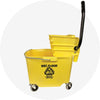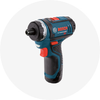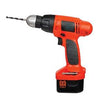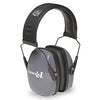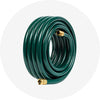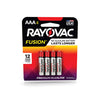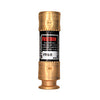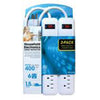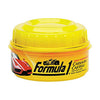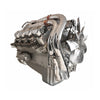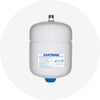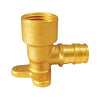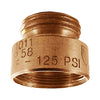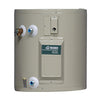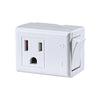Differences between wood putty and wood filler
∙ min read
 If you're in the business of repairing woodwork, you'll want to know the difference between wood putty and wood filler. While both products are designed for minor furniture, floor, and wall repairs, they have distinct differences that make them suitable for specific applications.
If you're in the business of repairing woodwork, you'll want to know the difference between wood putty and wood filler. While both products are designed for minor furniture, floor, and wall repairs, they have distinct differences that make them suitable for specific applications.
Wood putty is a softer, more malleable product ideal for filling small holes and cracks in wood and smoothing out surface imperfections. Wood filler, conversely, is a more durable and rigid product better suited for filling larger holes and gaps in the wood, such as those created by knots or deep scratches. Both products are available from reputable brands such as Minwax, Staples, and Dap, and choosing the right one for your needs will depend on the nature and size of the repair.
What is wood putty?
Wood putty is made from an oil-based or plastic-based compound. Boiled linseed oil is an example of the type of material that wood putty can be made from. The putty made from these chemical materials is flexible, which means it can tolerate exposure to outdoor weather conditions.
The putty also often contains colorants that mimic natural wood tones; this means you can find a putty that closely matches the color of the wood you want to repair. This is important because putty cannot be dyed; however, it is possible to change the color of the putty by painting it, but only after it has dried completely, which is quite a time-consuming process, taking about 72 hours.

What is wood filler?
Wood filler is made from wood by-products suspended in a resin that acts as a binder. After application, the filler dries quickly, usually in a few minutes, although it can sometimes take up to an hour. In any case, it dries faster than putty. Once dry, wood filler becomes rigid and inflexible, so it can be sanded as needed.
Depending on the wood content, the filler can be stained after application and curing. Check the label before you buy it and advise your customers to do the same because the packaging should indicate whether the filler can be stained.
Wood filler has different consistencies. It can be thin and liquid, like pancake batter, or thick and dense. Thicker consistencies can be similar to putty, which may be part of the confusion between the two. More viscous filler products are used to fill large holes or gaps, while thinner fillers often fill pores to give a smoother texture to woods with open grain.
Fillers can be solvent or water-based. Made of epoxy or vinyl, solvent-based fillers are more resistant to temperature and humidity changes. However, they are more expensive and produce more odor by giving off volatile organic compounds. Water-based fillers dry faster, are less expensive, and are easier to clean. They have almost no odor and are more versatile because a thick filler can be thinned with water if necessary.

Depending on their consistency, fillings are presented in three different types of containers:
-
Sticks: The filling that comes in sticks has the thickest consistency, almost solid. Pieces of the required size can be removed, and the filler applied by hand or with a spatula. Tibet Almond Stick is an example of a wood filler stick.
-
Tubes: Tube fillings have a thicker consistency, although not as thick as filler sticks. It can be applied with a spreader and allows for large jobs. It can be solvent-based or water-based; Elmer's Carpenter's Light Brown Wood Filler is an example.
- Squeeze tubes: Fillers with the thinnest consistency can come in squeeze tubes to be applied directly where needed without using a spreader. An example of this presentation is Staples latex tube fillers, which come in colors that mimic natural wood.

Where would each be used?
One material is not better than another, but it is essential to know when to use them. The following tips can help you properly use wood putty and filler in your home or business.
- Exterior repair putty: Unless a filler explicitly states that it can be used outdoors, it should be used for exterior repairs because of its flexibility and weather resistance.
- Wood filler in unfinished wood: The chemicals used in the putty harm bare wood, while the filler is designed to adhere to it. If you or your customers must use putty, the wood must be finished first.
- Wood putty for more accurate color matching: Wood putty offers more color options than wood filler. However, the wood must be finished before choosing a putty color.
- Filler for quick repairs: if the repair needs to be completed quickly, a filler is the best choice because of its faster drying time.

Max supports experts and professionals
In summary, wood filler and wood putty have unique uses and advantages. While wood filler is perfect for filling more significant gaps and holes in wood, wood putty is more suitable for more minor repairs and finishing touches. Therefore, choosing the right product for your project is essential to ensure the best results.
We're happy to assist you if you're looking for volume pricing or a customized quote for your bulk purchase of wood filler or wood putty. Additionally, our Max Pro program offers exclusive benefits for businesses, including discounted prices and priority customer service. Joining our Max Pro program is easy and provides various perks for your business.
We pride ourselves on providing high-quality products and exceptional customer service. So, whether you need wood filler, wood putty, or any other woodworking supplies, don't hesitate to contact us to discuss your options. We're here to help you achieve your business or project goals!
Max Warehouse is your best partner!


